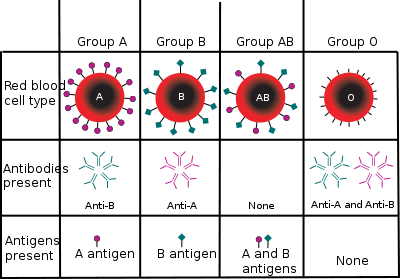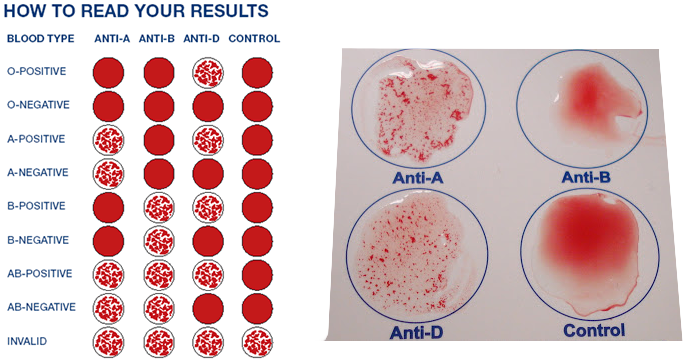BLOOD TYPING
People have different blood types due to the presence or absence of specific antigens on the surface of their red blood cells. These antigens are molecules that can trigger an immune response if they are foreign to the body.
The ABO blood group system is one of the most well-known classification systems for blood types. It's based on two antigens, A and B, found on the surface of red blood cells, as well as antibodies in the plasma that can react against these antigens. Blood types are determined by the presence or absence of these antigens:
- Type A blood has A antigens on the red blood cells and B antibodies in the plasma.
- Type B blood has B antigens on the red blood cells and A antibodies in the plasma.
- Type AB blood has both A and B antigens on the red blood cells and no A or B antibodies in the plasma.
- Type O blood has no A or B antigens on the red blood cells but has both A and B antibodies in the plasma.
Blood Type is Controlled by 3 Alleles
Alleles: A, B, O
A & B are codominant
O is recessive
Why is type "O" the universal donor?
*The antigens on the surface of your cells (or donated cells) will cause a reaction if your immune system does not recognize them as being part of you. Hence, if you are Type A, and transfused with Type B, your body will mobilize a massive immune response against the "invading" blood. This will cause coagulation (agglutination) of blood and death.
Each blood group has different antigens on its surface. These antigens could trigger an immune response (antibodies) in transfusion recipients.

Look at the chart: Explain why Type "O" blood can be donated to anyone.
Why is AB called the "universal acceptor"?What blood types could a person with Type O blood accept?
Rh Factor (Rh = rhesus monkey)
A person can have surface Rh antigens (and be Rh +) or no antigens (and be Rh
- )
Erythroblastosis fetalis - antibodies in the mother's blood attack the fetus, usually in 2nd pregnancies.

Image Source: http://biology-forums.com/gallery/
Blood Safety
Blood can carry diseases and health care professionals must be careful when working with blood.
A bloodborne pathogen is any disease causing agent that is present in the blood and can be transferred from one person to another.
Examples of blood borne pathogens:
-
Hepatitis B virus (HBV): It can cause serious liver infections and is highly infectious if blood or bodily fluids containing the virus enter the bloodstream of an uninfected person.
-
Hepatitis C virus (HCV): Similar to HBV, it affects the liver and can lead to chronic infections and liver damage.
-
Human Immunodeficiency Virus (HIV): This virus attacks the immune system, leading to acquired immunodeficiency syndrome (AIDS). It weakens the body's ability to fight infections and diseases.
Testing Your Blood
A test kit can be used to test your blood type. It involves pricking your finger and placing a drop of blood on a card that will react to a serum on the card that contains antibodies. You will be given the opportunity to test your blood type using this technique.

